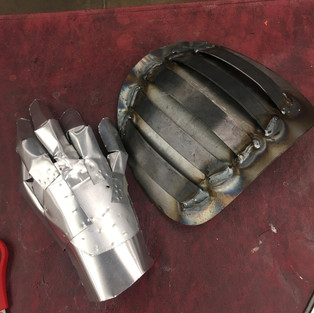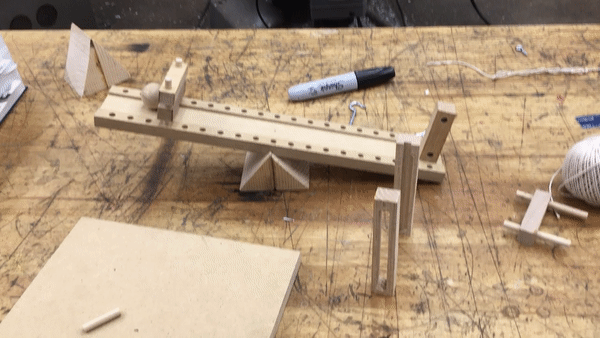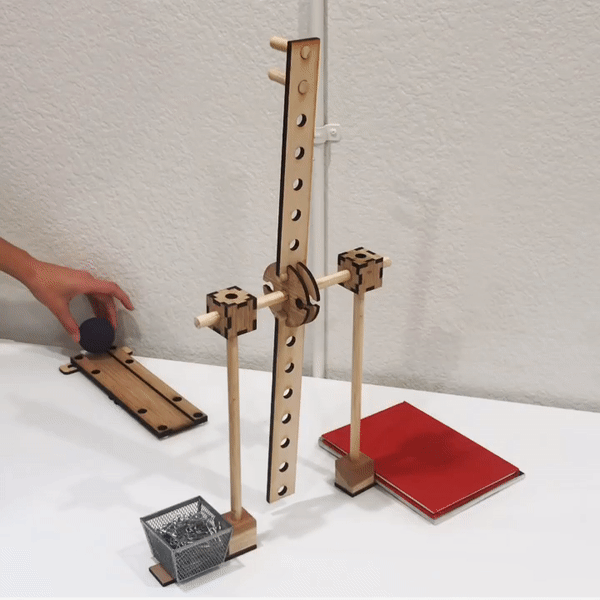The Magic of Makerspaces
- Alana
- May 12, 2020
- 5 min read
What are they, Why they matter, and Where to Find One
I have no shortage of grand ideas: contraptions, art pieces, and products I want to test out and build. But I didn’t grow-up with a workshop in my garage or a leathery-handed grandfather who taught me the secrets of woodworking. So I’ve had to seek out not only tools, but knowledge, elsewhere. Enter: Makerspaces.
A makerspace is a community space where anyone can teach, learn, and practice creative skills. Makerspaces are shaped by community interest and can include spaces for woodworking, metal fabrication, 3D printing, laser cutting, screenprinting, electronics and computer hacking, sewing, and whatever else members are interested in.
They're on the rise, with more and more popping up in libraries, schools, and community spaces.

My first introduction to the Makerspace concept was in my college’s metal shop, a space not quite as hip and modern as a Makerspace, but with the same collaborative, make-anything spirit. Tucked into a corner of the science building’s basement, the windowless workshop housed machines so old that they looked like they had manufactured supplies for WWII. Steve, their unhurried caretaker, was wholly responsible for the welcoming atmosphere of the otherwise austere space. He played jazz music and explained how to use the machines, always patiently, never condescendingly, with a subtle Louisiana drawl and a toothpick tucked in the side of his mouth.
Once you took Steve’s 'Intro to Machining and Fabrication' class, the world of metal (and wood and whatever else) opened up to you. Students would run down the cement stairs to that basement wonderland and ask “Steve, will you help me make this ski pole into a flask?” or “How do I create an electric longboard,” or “Can you help me make something to house the amplifier I made?” and Steve would always smile and help. The self-motivation fueling these projects made the space feel boundless and alive: the same energy I’ve felt in every Makerspace I’ve stepped into since.
Metal shoulder pad and hand that I made in Steve's shop for my Furiosa from Mad Max: Fury Road Halloween costume
By the time I ran down the stairs to Steve’s office the summer of 2016, he had already helped me make a steel ninja star and a Furiosa costume. This time I told him I wanted to make toys. I tested out ideas that summer, bringing them to life with Steve’s careful aid: MDF, wood, and plastic manipulated into ramps and pulleys.
I eventually moved aboveground to my school’s small makerspace in order to take advantage of the 40-watt laser cutter. When my ideas outgrew the laser cutter, I transitioned to an even bigger, community makerspace, seeking out an even bigger machine.
Working with tools, a drill press, and a laser cutter in various makerspaces.
When it comes to Makerspaces, the Pikes Peak Makerspace in Colorado Springs felt like the big leagues. Touring it for the first time made me giddy, like stepping into a science museum: so many possibilities, I just wanted to run around and touch things! It resembled the rest of my life: chaotic, but organized if you looked closely. Multiple 3D printers, laser cutters, printers, and tools lined the walls like a mad laboratory. A wood and metal shop took up the back corner. But the pièce de résistance sat in its own room: the CNC (LINK). This computer-controlled machine was what I had come here for: an 8x4 foot robot drill that could carve and cut material thicker than the laser cutter.

Momentix co-founder Anna observes the CNC
During my orientation to the space, I heard something that summed up the entire makerspace ethos: “It’s ok to mess up.” Break something? Totally fine. Just let someone know so it can get fixed. Members of various genders and ages worked to make electric cars, build out their van, run their homemade-soap side-hustles, teach mosaic classes, CNC guitars, laser cut DnD supplies, and upcycled circuit boards into art. Have a question? Someone in that room could answer it, and if not, they’d help you think the problem through.
This is what make makerspaces magical. Machines and tools are great, but a culture that prioritizes failure, learning, and collaboration is what allows makerspaces to be more than just physical workshops.
Why Makerspaces?
Access to space and equipment. I’m in no position to drop +$10,000 on my own CNC. The makerspace gives me unprecedented access to this machine and so many other tools. Plus, when I’m not sawing/cutting/drilling, the space works like a more informal coworking space for more mundane tasks, like sending emails.
Access to information. Member-led classes, often for a small fee, cover a range of topics including how to use the machines and how to create specific projects. Even more guidance comes informally from makerspace members. Two classes plus hours of help and advice from Makerspace members taught me to work the machine, design and code my toolpaths, and make my machining more efficient.
Access to community. Makerspaces are ripe for mentorship and collaboration. Retired woodworkers work alongside young computer whizzes and artisans and even kids. Everyone brings a different set of skills to the table, resulting not only in interdisciplinary collaborations, but intergenerational friendships. Subgroups within makerspaces can form around shared interests (solar-power enthusiasts, costume makers, Raspberry Pi meetups!).
Real world impact. Such comprehensive access to tools, information, and community can power real-world impact. Check out how 3D printers and open-source code are being used to create free prosthetics. Plus, Makerspaces have made the news for helping COVID-19 relief efforts by fabricating and donating PPE. An initiative in Colorado is uniting makers to create PPE for frontline personnel, delivering over 41,000 pieces of PPE so far.
Colorado Springs community members help make PPE as part of Make4Covid (left), A 3D printed prosthetic hand, part of e-NABLE (right).
Where do I find a makerspace?
Libraries. As libraries adapt and modernize, spaces for tinkering are increasingly common. For example, I know my local library network has a series of makerspaces called ideaLabs, which include not only 3D printers and laser cutters but sewing machines and a recording studio. Colorado Springs has a similar program.
Schools. From elementary to colleges, schools are starting to include makerspaces to enhance project based learning and STEAM education. I recently had the opportunity to see a shining example for a k-12 school district at St. Vrain’s STEAM night, where they have an entire building dedicated to Innovation. College Makerspaces, like CU Denver’s Inworks, offer opportunities for the general public, not just students, to engage.
Community Makerspaces. Community Makerspaces come in a lot of different flavors. ‘Hackerspaces’ generally cater to more computer and electronic oriented communities. Some, like Mindcraft in Denver, will have a more kid-focused orientation. Others are dedicated to more general creation, like the Loveland Creatorspace. Typically you pay a monthly membership fee for access, or drop-in rates for more limited access.
Coworking spaces. While visiting Chicago, I had the opportunity to tour mHub, a novel coworking space for startups creating physical products. It had the open-format layout common to most makerspaces, but with an entire section of the building dedicated to prototyping. This makerspace + coworking space combination gave the place an energy-- everyone in there was not only a maker, but a business person, too.
Make your own. Makerspaces don't have to be fancy to foster creativity. Stuck at home? Wonderful Idea Co. has a great post about setting up an at-home tinkering space. Or check out this guide for getting a Makerspace started at your institution + Stanford d.School's book on setting up a physical space for creativity.
Left to right: A makerspace at a Colorado Springs public library, 'Make Space,' a book on physical makerspace design, and a Fablab in Portugal.
There are a lot of different names for makerspaces (Fablabs, ideaLabs, hackerspaces, Inworks, Makerspaces, Innovation centers), which can make locating one difficult; keep this in mind as you search for your local space.
Whether you're an experienced craftsman or a totally beginner, makerspaces are a place to explore, to try something new, to learn. They catalyze curiosity and collaboration, and for this reason, should be a part of every community.























